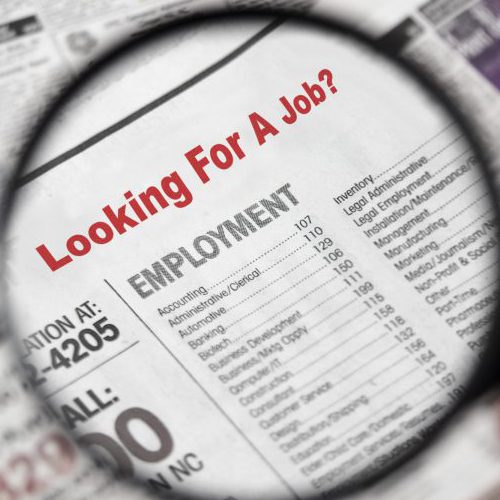unemployment
unemployment Articles
Whether or not you are a fan of the economic policies of today, one trend that has prevailed is that there are a record number of job openings.
Published:
Last Updated:
The U.S. Department of Labor has released its view on weekly jobless claims with another incredibly low number.
Published:
Last Updated:
When the Bureau of Labor Statistics released its state employment figures for July, five states had rates of less than 3%, well below the national average.
Published:
Last Updated:
While each monthly Labor Department reading on private sector payrolls gives a live snapshot of the U.S. jobs market, a more obscure report from the Labor Department actually shows just how much...
Published:
Last Updated:
The July unemployment rate fell from 4.4% in June to 4.3%, matching a 16-year low. Wages are up about 2.5% year over year.
Published:
Last Updated:
Wednesday acted as a preview for the flat to soft directional bias for Friday's BLS report after ADP released its national payrolls report for July.
Published:
Last Updated:
So far we are seeing more evidence pointing to slower payroll growth for July. Whether that changes as other preliminary jobs reports come out this week remains to be seen.
Published:
Last Updated:
As the national unemployment rate hit 4.4% in June, unchanged from the month before, the number dropped in 10 states, a sign that the jobs recovery is uneven. According to the Bureau of Labor...
Published:
Last Updated:
The employment situation in America is so robust that it has started to drive up labor costs for employers.
Published:
Last Updated:
Gold has had a rough month, and the major gains of 2016 have not been repeated across the board in 2017. It turns out that a strong payrolls report from the U.S. Department of Labor is just that much...
Published:
Last Updated:
U.S. employment increased by 222,000 in June, topping expectations. The jobless rate ticked up 0.1% to 4.4% from a 16-year low in May.
Published:
Last Updated:
Unemployment and jobs add up to the best live-reading barometer of the economy. Each month we get to see numerous data reports that act as a bias meter for how each monthly unemployment report will...
Published:
Last Updated:
Employers announced plans to trim payrolls by more than 31,000 jobs in June, the lowest monthly total of the year, according to Challenger Gray & Christmas.
Published:
Last Updated:
The markets brace for payrolls and unemployment data at the start of each month. Several private releases have been used a historical barometer by economists and traders alike to predict how the...
Published:
Last Updated:
The extraordinary improvement in the U.S. labor market includes the great majority of American cities.
Published:
Last Updated:













